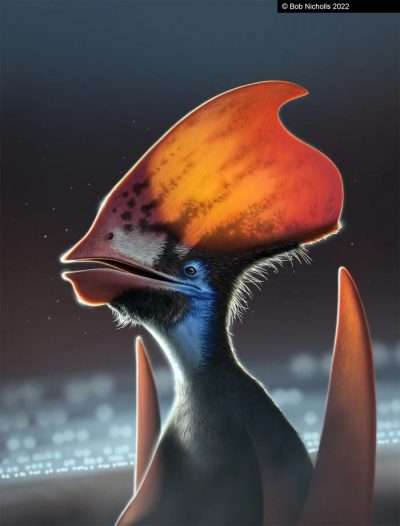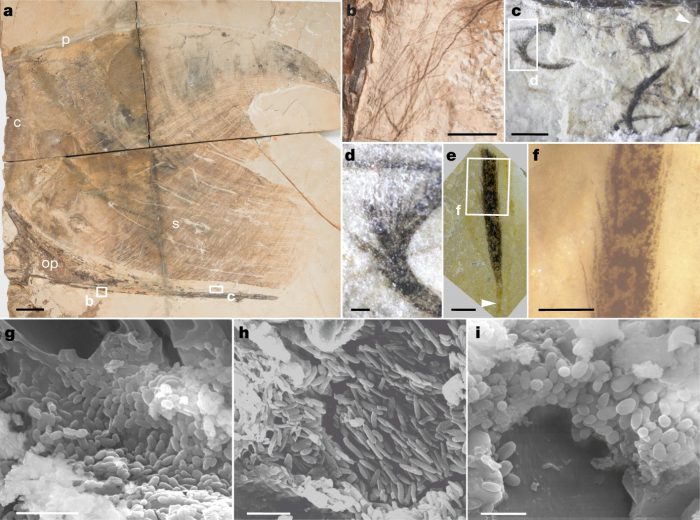Dinosaurs had feathers.
There was a time when that idea seemed absurd. But thanks to decades of research and study—as well as some really stunning fossils—we now know for a fact that a great many dinosaurs had feathers on their bodies. The link between them and modern birds just gets stronger all the time!
But speaking of birds, what about the 'birds' of the dinosaur age—the flying reptiles known as pterosaurs. Did they have feathers as well?
This was a big debate for a long time among researchers. Some experts felt it was likely that some had feathers, but they lacked the actual evidence. Until now!
A new fossil found in Brazil of the epically named Tupandactylus imperator has revealed the presence of feathers. This is the first time that feathers have been found on the remains of a pterosaur. What a game changer!
Cool crest, fantastic feathers

What a beautiful pterosaur! (Bob Nicholls 2022)
Of all the pterosaurs to find feathers on, Tupandactylus imperator is a pretty sweet specimen. This creature had a phenomenal crest that extended upward like a sail on its head. What a striking animal.
But in this case, the crest's importance came second to the feathers. The fossil contains two types of feathers found along the pterosaur's head. None of these feathers were the large ones seen on birds today. Instead, they were smaller and thinner—a central shaft with small fibres extending along it.
The colours!
One thing about pterosaurs has not changed with this discovery though. These feathers were not used for flight at all. Pterosaurs still had wings more similar to a bat's, made of a thin membrane stretched across a frame of narrow bones.
But these feathers were likely very colourful. How do scientists know? Because analysis of the fossil reveals plenty of melanosomes. These are microscopic organelles that bring pigment to bodies. There are many different types of melanosomes found on the fossil, which suggests that there were many different shades to this pterosaur.
Its head may have been similar to a toucan or puffin. Something that was colourful and really stood out!
Why is it so hard to know?
Perhaps you're wondering something. If we've been finding pterosaur fossils for well over a century, why have feathers like this taken so long to find?
For one, like dinosaurs, it is not all pterosaurs had feathers. So it is first a matter of getting lucky and discovering fossils of the right species.
But the other issue is that soft tissues like feathers are less likely to survive being fossilized. This is especially true of the very fine, small feathers found in this particular fossil. In other words, this really is a spectacular find!
For more info on how rare any fossil is, check out our General KnOWLedge video below!
 A collection of images of the groundbreaking pterosaur fossil. Section e and f show the feathers in detail. (Aude Cincotta et al, Nature 2022)
A collection of images of the groundbreaking pterosaur fossil. Section e and f show the feathers in detail. (Aude Cincotta et al, Nature 2022)









